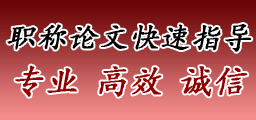
2015─ŕ┬ÜĚQËóŇZ(yĘ│)íÂđl(wĘĘi)╔˙ţÉíĚÚćÎx└ÝŻÔżÜ┴Ľ(xʬ)ţ}(1)
Is the Tie a Necessity?
Ties, or neckties, have been a symbol of politeness and elegance in Britain for centuries. But the casual Prime Minister Tony Blair has problems with them. Reports suggest that even the civil servants may stop wearing ties. So, are the famously formal British really going to abandon the neckties?
Maybe. Last week, the UK's Cabinet Secretary Andrew Turnbull openly welcomed a tieless era. He hinted that civil servants would soon be tree of the costliest 12 inches of fabric that most men ever buy in their lives.
In fact, Blair showed this attitude when he had his first guests to a cocktail party. Many of them were celebrities (ͬ├ű╚╦╩┐) without ties, which would have been unimaginable even in the recent past.
For some more conservative British, the tie is a must for proper appearance. Earlier, Labor leader Jim Callaghan said he would have died rather than have his children seen in public without a tie. For people like Callaghan, the tile was a sign of being complete, of showing respect. Men were supposed to wear a tie when going to church, to work in the office, to a party - almost every social occasion.
But today, people have begun to accept a casual style even for formal occasions.
The origin of the tie is tricky. It started as something called simply a "band". The term could mean anything around a man's neck. It appeared in finer ways in the 1630s. Frenchmen showed a love of this particular fashion statement. Their neckwear (ţi´Ś)impressed Charles II, the king of England who was exiled(┴¸Ě┼)to France at that time. When he returned to England in 1660, he brought this new fashion item along with him.
It wasn't, however, until the late 18th century that fancy young men introduced a more colorful, flowing piece of cloth that eventually became known as the tie. Then, clubs military institutions and schools began to use colored and patterned ties to indicate the wearer's membership in the late 19th century. After that, the tie became a necessary item of clothing for British gentlemen.
But now, even gentlemen are getting tired of ties. Anyway, the day feels a bit easier when you wake up without having to decide which tie suits you and your moodßt(yĘę).îW(xuĘŽ)╚ź.ď┌.żÇgydjdsj.org.cn.
1 The tie symbolizes all of the following except
A respect
B elegance
C politeness
D democracy
2 Why does Blair sometimes show up in a formal event without a tie?
A Because he wants to make a show,
B Because he wants to attract attention.
C Because ties are costly.
D Because he wants to live in a casual way.
3 Which of the following is NOT a social occasion?
A Going to church.
B Going to work in the office.
C Staying at home.
D Going to a party.
4 Who brought the Frenchmen's neckwear to Britain?
A Tony Blair.
B Charles ll.
C Jim Callaghan.
D Andrew Turnbull.
5 When did British gentlemen begin to wear ties regularly?
A After the late 19th century.
B In the 1630s.
C In 1660.
D In the late 18th century.
1 Díííí2 Díííí3 Cíííí4 Bíííí5 A
ŞŘÂÓ┬ÜĚQËóŇZ(yĘ│)┐╝ďçđ┼¤óú║
2015─ŕ┬ÜĚQËóŇZ(yĘ│)┐╝ďç─úöMďçţ}┤ˇ╚ź
2015─ŕ╚źç°(guĘ«)┬ÜĚQËóŇZ(yĘ│)┐╝ď糡(bĘĄo)├űĽr(shʬ)Úg
